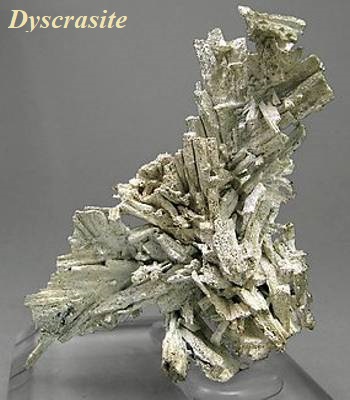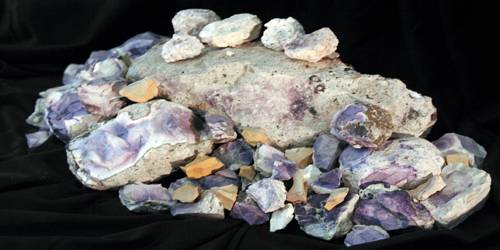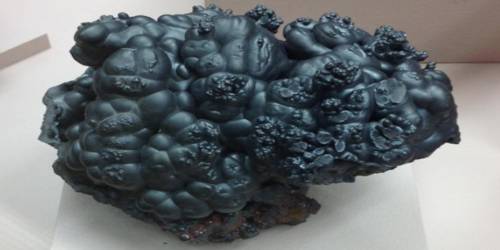Dyscrasite is a silver antimonide mineral that was first described in 1797 in the Wenzel Mine, Black Forest, Germany. The silver antimonide mineral dyscrasite has the chemical formula Ag3Sb. It is an opaque, silver-white, metallic mineral which crystallizes in the orthorhombic crystal system. It forms pyramidal crystals up to 5 cm (2.0 in) and can also form cylindrical and prismatic crystals. It is locally an important ore of silver.
It was first described for an occurrence in 1797 in the Wenzel Mine, Black Forest, Germany. The name dyscrasite comes from the Greek word δυσκράσις, meaning “a bad alloy.”
General Information
- Category: Antimonide minerals
- Formula: Ag3Sb
- Crystal system: Orthorhombic
- Crystal class: Pyramidal (mm2)

Properties
Dyscrasite occurs in black, gray, yellow, or silver-white colors. It is a non-fluorescent, non-magnetic mineral, having a silver-white streak and metallic luster. It produces curved shavings or scrapings and can be formed as granular or pseudo-hexagonal crystals.
- Color: Silver-white (tarnishes to lead-gray, yellowish, or black)
- Crystal habit: Pyramidal crystals also cylindrical, prismatic to platy, striated; granular, massive.
- Fracture: Irregular or uneven
- Tenacity: Sectile
- Mohs scale hardness: 3.5 – 4
- Luster: Metallic
- Streak: Silver-white
- Diaphaneity: Opaque
- Specific gravity: 9.4 – 10
Discovery and occurrence
Dyscrasite occurs in hydrothermal veins, with other silver minerals, as both a primary and secondary mineral.
It occurs as a hydrothermal mineral in silver bearing veins in association with native silver, pyrargyrite, acanthite, stromeyerite, tetrahedrite, allemontite, Galena, calcite, and baryte. It is closely associated with barite, calcite, Galena, allemontite, tetrahedrite, stromeyerite, acanthite, and pyrargyrite.
Information Source:















